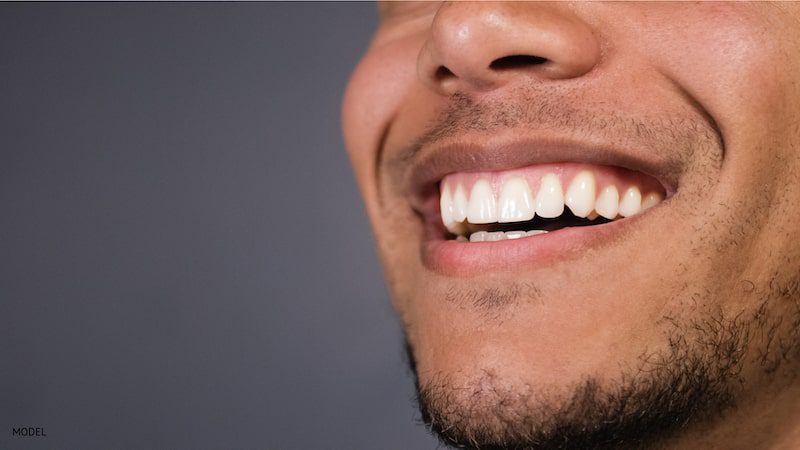When Should I Receive a Soft Tissue Graft?
3 Minute Read:
Do you cringe when you bite into some delicious ice cream or drink a flavor-filled slushie? Have you started to dread brushing your teeth because of a sensitivity or stinging?

If you answered yes to either of these questions, receding gums may be the culprit. Gum recession occurs when your gum line rises, exposing the root of your teeth.
Soft tissue grafting (gum grafting) is designed to create a new, healthy layer of the gum tissue over the exposed roots. While you may have heard of this promising treatment, you might be unsure of the right time to receive it.
How Common Is Gum Recession?
Gum recession might sound scary, but it is actually more common than it seems. One study found that nearly half of their participants were experiencing some form of gum recession.
While there are many causes for gum recession, one of the most common is periodontal disease (gum disease). Bacterial infections common with more advanced stages of periodontal disease can eradicate the gum tissue, exposing more of the tooth and even the tooth root.
What Are the Signs of Gum Disease?
Gum disease is a tricky subject. Unlike other infections, gum disease (periodontitis) can go undetected and untreated for quite some time before it becomes a serious issue to your oral health.
Even still, this doesn’t mean you should take your time getting treatment.
Gum disease can damage the soft tissue and bone holding your teeth in place.
Signs of gum disease include:
- Puffy, red, or swollen gums
- Tender gums that bleed when brushed
- Blood when you spit out toothpaste
- Painful chewing
- Sensitivity to cold foods and drinks
- Teeth that look longer than normal
- Gums that have pulled back to expose part of the root
Can I Prevent the Need for a Gum Graft?
If you feel like your gums are beginning to recede, it is important to see a board-certified periodontist as soon as possible. Allowing gum recession to continue without a professional consultation could worsen the situation.
In the meantime, patients can follow easy tips to prevent gum recession:
- Always brush and floss at least twice a day
- Stay away from acidic drinks and foods
- Avoid a sugary diet
- Eat vegetables that are jam-packed with antioxidants
- Try toothpaste specifically made for gum disease and sensitive gums
- Visit a periodontist or dentist
When Should I See a Dentist?
Men and women who follow their regular checkup schedule can dramatically improve their dental health and decrease their chances of developing gum recession.
If your dentist decides gum grafting is the best option, your soft tissue graft will be a straightforward and effective treatment designed just for you.
A thin piece of tissue will be taken from the mouth and carefully moved from one area to another. Once treatment is complete, a stable and healthy strip of protective gum tissue will heal over the exposed root.
Want to Learn More About Gum Recession and Soft Tissue Grafting?
If you would like more information regarding gum disease symptoms, gum recession, or soft tissue gum grafting, contact Dr. Salamati to schedule a consultation in Beverly Hills by calling our office at (310) 275-1090 or by filling out our online contact form.
